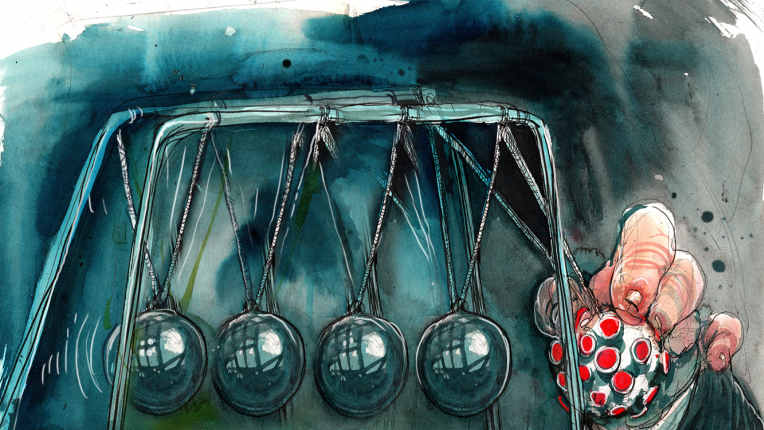Household fragility points to post-COVID pain
by James ThomsonA new week starts with a little bit of optimism.
Another big chunk of Australia’s school students are heading back to class, letting the nation’s parents breathe a collective sigh of relief.
More parts of the economy are starting to emerge from hibernation. On Monday, women’s fashion group City Chic Collective joined the growing ranks of retailers starting to reopen their stores.

And economists and business leaders can start tossing around the question of whether the country should spend some of the $60 billion in stimulus payments we all thought had been already shovelled out the door.
Prime Minister Scott Morrison and Treasurer Josh Frydenberg might be intent on banking their new-found stimulus savings, but the debate about expanding fiscal support is likely to become very intense, very quickly.
For all the signs of optimism in the economy, there remains underlying fragility.
We can expect the case for the government to expand fiscal support for the economy is likely to build in coming days as the hardest-hit sectors – tourism, hospitality, education, leisure and retail – push for specific sectoral measures to boost broader economic activity.
The bold and big stimulus package was the easy part because there was really no choice.
The combination of the government’s JobKeeper and JobSeeker packages, the banking sector’s loan repayment deferrals, and the rent waivers and reductions provided by the nation’s landlords have clearly played a critical role in supporting the economy.
But reheating economic activity – rather than simply thawing it out – will take a bit more work, if the insights from a survey of consumers conducted by UBS in early April at the height of the pandemic panic is any indication.
Worrying signs of vulnerability
The survey found a third of consumers were bracing for a loss of working hours because of COVID-19, while 22 per cent were expecting a reduction in wages.
But more concerning, a staggering 39 per cent said they had less than one month in buffers if they were to lose their jobs, while 63 per cent of respondents said they had a buffer of less than six months.
UBS strategist Pieter Stoltz and his team noted this was a worse result than the latest HILDA data, which showed 50 per cent of households had less than six months buffer. “This could be driven by households already drawing upon their savings given the rise in unemployment,” the UBS team said.
Regardless, UBS argues the data suggests the stimulus measures thrown at the economy have been vital. “A removal of support measures before the economy fully recovers could be very negative for consumption.”
The UBS data suggests consumers pulled back on spending in April, which is perhaps not surprising given it wasn’t exactly easy to go out and buy much.
But spending and saving intentions also point to a contraction of consumption in the next 12 months, as consumers brace for a hit to their income.
Households are bracing for more tough times
The proportion of respondents who expected household income to increase plunged from 46 per cent in the first quarter of calendar 2020 to just 35 per cent.
In addition, middle- and low-income households are expecting to have to take on more debt in the next 12 months.
The note of warning about the strength of consumption in a post COVID-19 economy echoes a point business leaders on the front line of consumer spending have already started to make.
Wesfarmers chief executive Rob Scott told Chanticleer last week the conglomerate was “very focused on what happens over the next three to six months as the various government stimulus programs come to an end” and unemployment inevitably starts to rise.
Solomon Lew and Mark McInnes, the chairman and the chief executive of retail giant Premier Investments, have similarly said the government will likely need to provide support to get spending moving again once the hibernation is over.
Reopening is going to be harder than shutting down
We are about to discover throughout the economy – in our schools, businesses, shops and even sporting clubs – that the process of going into hibernation was far less complex than emerging from it.
And so it will be for the government.
The bold and big stimulus package was, in some ways, the easy part, because there was really no choice.
But providing the right stimulus for the reopening of the economy will be much more complex, because it will need to break through the psychological barriers to spending that the pandemic has put up in the minds of consumers and business owners.
At least Morrison and Frydenberg have a heck of a lot more options – $60 billion worth – than they did this time last week. Even if they’re not keen to use them.